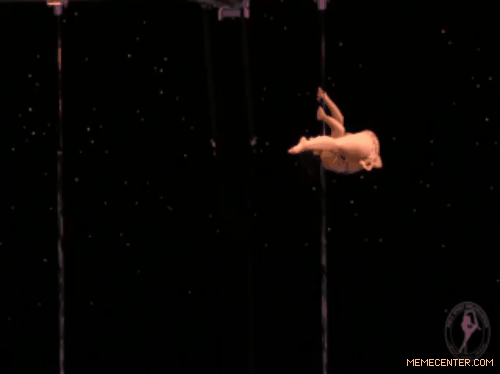In this hectic, whirlwind week before the third annual Pacific Pole Championships, I wanted to sit down for a moment and address a question that we have been asked many times by pole performers and competitors - I want great photos and videos; what can I do to help that happen?
Our whole job is to make that happen, obviously! And I'm sure that having photos and videos of your piece is not the reason you're braving all the long days of training, bruises, stress and nerves - or at least, not the only reason. But we realize that many PSO competitors are instructors, or professional performers, or aspiring to be pros. So the images that we capture will be used to promote your teaching career or your studio, or to hang on your home studio wall and remind you of your own awesomeness.
Fortunately, the techniques that make for great photos and beautiful video are all the same things that make for amazing onstage performances. In short: it's all in the details. (I made some little gifs to illustrate my points, too.)
Sergia Louise Anderson - the eye contact is EVERYTHING!
Stepping onstage, there are probably some major moments in your piece that you're concerned about. Will I land that trick? Will I make it through that pass where my hands start to slip? Will my endurance last? Don't stress about those big moments - at this point, you've trained enough that these are just lingering fears, just nerves. You (and your coaches, training partners, teammates, studio colleagues, friends) all know that yes, you actually will make it through. You've done it many times in practice, right? So take a big breath and believe in your body's abilities! Being confident in your movement will go a long way toward making a good impression on the judges and the audience. If you can make eye contact while in a beautiful pose, that has a huge impact - on your overall performance quality, but also on the photos and videos! Being able to connect with your audience while inverted and holding on for dear life comes from confidence.
Shaina Cruea - Look at those gorgeous transitions!
Be aware of your transitions. At this point, you've done the major combinations dozens of times and you know how to get from the floor to the pole, or from the invert to the trick. But the details of how you move from one place to the other transform the story you are telling. It goes beyond "point your toes" - your legs are visual paintbrushes moving through the air. What is the quality of your movement - stuttering, floppy, and laborious? Or can you make them seem to float, slice and swirl across the stage? Take your time, breathe and visualize what you want to tell the audience. Details matter, especially in a competition like PPC where transitions are judged for contact points, and fluidity.
Before going onstage, do what it takes to make everything stay put. Spray adhesive, tape, pins, "double bagging" with nude undies, etc. If you have a "wardrobe malfunction," a serious one where the boobies make an appearance, then you may need to take a moment during floorwork or in a pause to cover up - while facing away from the audience, of course! But if things are just slipping a bit, don't worry about it! Chances are, you notice that far more than the audience or judges. But if you're tugging on a strap every two seconds, everyone will focus on that - and it'll be in the video, too. Plus, you'll be distracted from telling your story! Don't let a costume slip be the center of attention.
Crystal Belcher - this character is all about the sass.
One detail that really works wonders - Smile! Or smirk. Or frown. Or make that crazy asylum-escapee grimace. Or do the Beyonce tiger-mama roar - whatever is true to your character. Your expression can upgrade a nice photo where your body looks good to an incredible shot where you look like a professional performer. Because, check it out, Southern California regional pole competitor, you ARE!
Waeli Wang - smoothly unfurling into the full extension.
Finally - and probably most important - remember that you are a dancer, a visual artist. You're not a bodybuilder in a fitness competition, who must pose and hold, pose and hold, pose and hold. Move through your "poses" and "tricks" with honest emotion, extend into the deepest stretch and then flow out and continue the story. The audience will stay with you, and your story won't be broken up by uncomfortable pauses.
We'll focus on staying in focus, and following you across the stage, and firing the shutter at the moment you open all the way up. Breathe deep, believe in your movement, and captivate us with your character. You got this!





